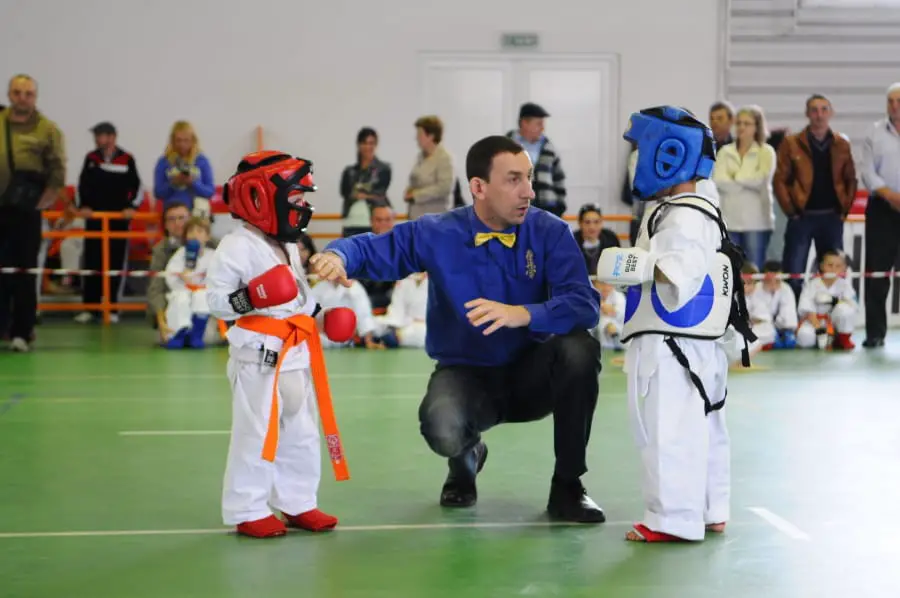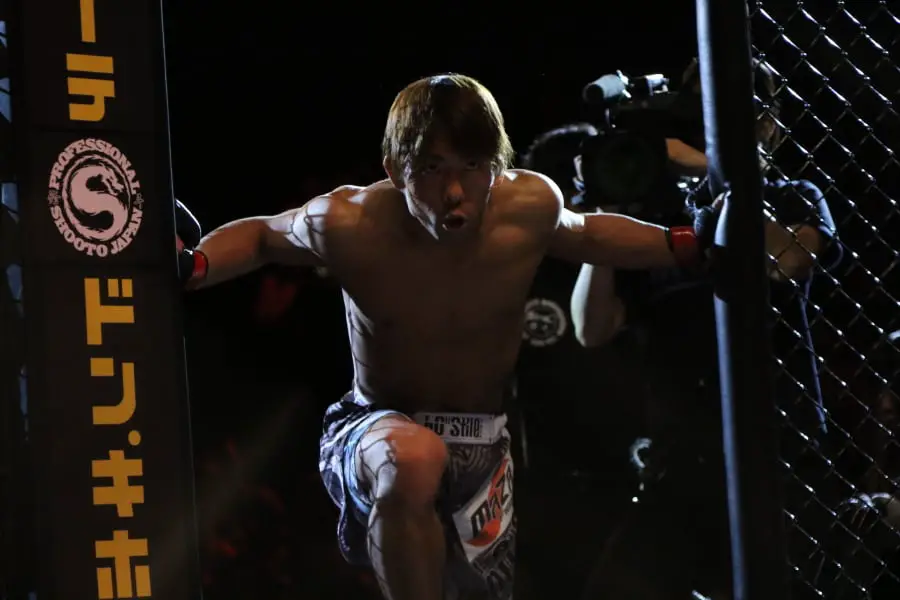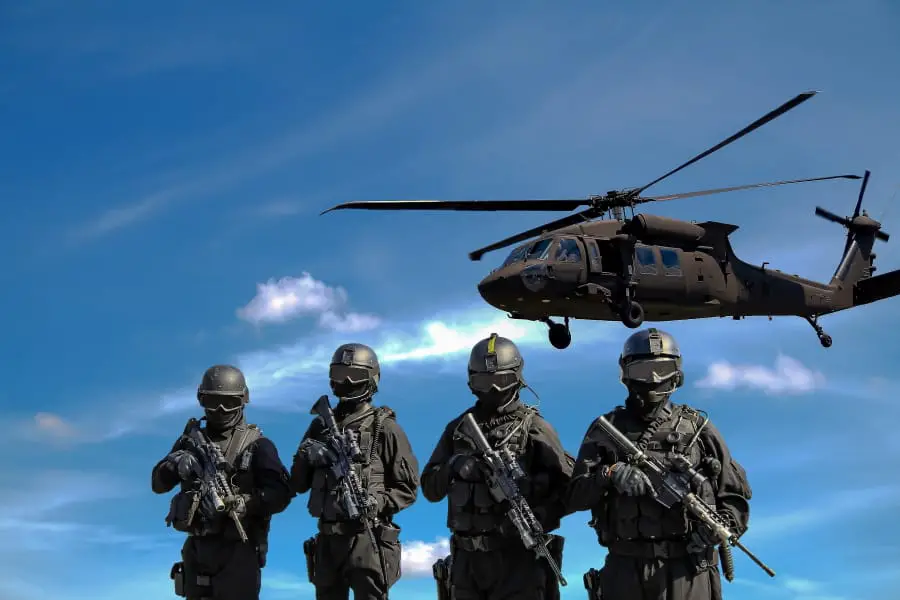
The martial arts, contrary to what may be popular in movies and video games have never been merely ‘fighting’ systems. Since nearly all of a students time is spent learning a style, the largest portions of these systems are sports, art forms and defense. If someone is fighting, they have failed.
Many martial arts encompass sports, self defense systems, and tradition filled arts. What they should not engage in is fighting. Fighting is an intentional failure on the part of the martial artist and a breach of civil laws.
“Wait a minute,” you say. “I have seen some of those sports and how they train for self defense. How is that not fighting?”
Granted, especially for adults, many of these can skirt the line in their sports and training. Yet that is not the point of the art or system. To understand this, we have to establish the scope of the question. Though there are many very different martial arts styles, they have a very common framework of applications. Fighting is included in zero of them.
Contents
What’s The Big Deal With Calling Sport or Self Defense Fighting?
Let’s look at what some of the most common styles contain in a simple and straight forward manner. Charts are good for that…
| Style | Sport | Self Defense | Art/Tradition | Fighting |
| Karate | ✔ | ✔ | ✔ | ✘ |
| Judo | ✔ | ✔ | ✔ | ✘ |
| Brazilian Jiu Jitsu | ✔ | ✔ | ✔ | ✘ |
| Kali | ✔ | ✔ | ✔ | ✘ |
| Kung Fu | ✔ | ✔ | ✔ | ✘ |
| Boxing | ✔ | ✔ | ✘ | ✘ |
| Mixed Martial Arts | ✔ | ✔ | ✘ | ✘ |
| Muay Thai | ✔ | ✔ | ✔ ** | ✘ |
| Kendo | ✔ | ✘ * | ✔ | ✘ |
| Wrestling | ✔ | ✔ | ✘ | ✘ |
| TaeKwonDo | ✔ | ✔ | ✔ | ✘ |
*Because Kendo is based on the long katana sword, it would be very irregular if utilized in a self defense situation today. Never say never, but pretty close.
** Muay Thai is a bit of an exception here. There may not be much in the way of developed artistic expression save the Wai Kru Ram Muay (dance like salute to ancestors before a match). Tradition they definitely have.
Now let’s get back to the the question. How is what martial artists are doing in these first three columns of the chart not considered fighting and what does it matter anyway?
Two roads diverged in a wood, and I—
The Road Not Taken – by Robert Frost
I took the one less traveled by,
And that has made all the difference.
Though Mr. Frost here has a rather grim meaning in mind for these three lines, the decision point of the diverging roads and what each choice means is very poignant. What martial artists do, how they do it, why they do it, and where they do it makes all the difference.
Most people can relate much better to story than to lists of facts. So let’s look at a scenario…
- Johnny sees Jasmine getting bullied and steps in and physically puts himself in between her and the offending boy. There may or may not be physical contact, but most everyone would applaud Johnny.
- Now let’s say that the offender tries to hit Johnny. Johnny ducks, takes down the offender injuring him in the process. This still seems cut and dry self defense right? Sure.
- Yet what if now Johnny is mad. He then punches the boy a few times to ‘teach him a lesson’. Now Johnny has just become the offender. Before he was defending Jasmine, but by the end he was assaulting the boy.
This is a simple illustration, but it gets the point across that fighting is what happens when one person takes for themselves the responsibility belonging to judges and juries. Self defense or the defense of others is just that, stopping the threat. It has to be reasonable and proportional or it slips right over into the fighting column.
Extreme Martial Arts Can Be Considered Either Sport or Fighting.
So by now, unless you have lived under the very crowded proverbial rock for the past few decades, you have seen at least photos of a cage match. Whether this is in the UFC (Ultimate Fighting Championship) or other organizations, it usually looks and feels the same. So, how is that not fighting?

Truthfully, sometimes it is and sometimes it isn’t. For the longest time these events were illegal in many countries and even states in the U.S. It wasn’t until 2016 that the State of New York lifted its ban. This was due to the fact that these events sit squarely on the line between assault and sport according to many laws.
The surprisingly extensive rule system, governing bodies and medical staffs do make a significant difference. Yet, it really all comes down to the two individuals competing. Nearly everyone who has seen professional wrestling understands (look out *SPOILERS* coming) that everything within that ‘sport’ is just an act. There really is no fighting possible in most cases since the matches and even the interviews are heavily scripted.
This is not the case for MMA. Unless there is a bout thrown (intentional loss) the outcome is an actual physical confrontation. This also goes for the ‘trash talking’ and physical fighting outside of the ring. Some ‘fighters’ are extremely respectful. They see the competition as a way to test their skill in order to go back and teach students, who have no desire to do the same.
The sad truth is, as more money entered the sport, so did corruption, a lack of respect, and a general dehumanizing element. This makes it a tossup when watching one of these events, whether or not you are witnessing a competition between two athletes or a brawl between two street thugs.
It completely goes without saying that these shows are extremely violent and in no way should be viewed by children. According to the University of Rochester Medical Center Website, even the teenage brain is not fully developed until age 25. As a responsible parent, your fight is to keep your children safe.
Tradition in the Martial Arts Can Sometimes Also Cross the Fighting line.
So how can kicking in the air during a kata (Japanese term for pre-defined movements against imaginary opponents) be considered fighting? In this case, it would be hard to make that claim. This is also going to apply to many other styles with similar sport or traditional training methods.
On the other hand, many styles with long traditions do not include this type of training and do not intend on performing movements with beauty or the human form in mind. Some styles have movements that are specifically designed to be brutal and cause death in the intended victim.

In teaching police forces, military branches of all types, and riot control squads all over the world, I have taught these techniques as staples of their training regiment. Obviously they are not applying these techniques on their training partners in this way, but some of these techniques have very little defensive applications. They are meant as aggressive assault style tools to be used in that manner.
Most if not all of these techniques come from traditional arts that were used in wartime. These techniques for these warriors of old in specific war scenarios were bound with honor and strict ethical guidelines. We have sadly lost this sense of urgency in requiring only ethical and moral people be taught these skills. It can not be stated more clearly, people are not all the same in a multitude of ways.
One example is the style of Pekiti Tersia Kali. It is a knife based system where the tradition is wrapped in the most violent of movements imaginable. Even learning these techniques by the wrong people could spell disaster for an unsuspecting victim in the future. The grave nature of these sorts of techniques taught to unethical individuals could lead to even more disastrous results than simple assault.
The Takeaway…
So what can be learned from a brief overview like this? For one thing, it becomes evident that the martial arts as a whole are as broad and as varied as the diverse cultures and applications that birthed them. This goes too for their ability to be applied in many ways to many different outcomes.
How should a student use this information? That student has the responsibility to govern themselves and find ethical instructors. These teachers should give the full range of a system’s tradition, sport, and self defense and not devolve it into the most effective street fighting method. Even when military groups devised the beginnings of a style, the training revolved 99% of the time around sport, art, and defense.
What is a parent to do with this? This should help the parent of a would be little ninja most of all. Knowledge is power. You can use this to protect and guide your child. Though they might want to be the next Teenage Mutant Ninja Turtle™, explaining that those programs are not glorifying fighting is crucial. Those images are meant to depict hero characters sacrificing for others, not simply imposing their own wills.
Related Questions
How are the martial arts art forms? Many martial art styles included elements of dance (Capoeira), performance (TaeKwonDo, Karate, Kali etc.), large group choreography to music (Kung Fu) and even slow performance art (Iaido).
What martial art did the samurai practice? There really isn’t a form of martial art that they did not utilize at least in some form. Bushido (the way of the warrior) was a philosophy involving every aspect of life pursued by many generations of samurai. This encompassed everything from sword arts to grappling as well as grooming to tying knots for hair, clothing, and hostage hand binding. Visit my post about just this question.
